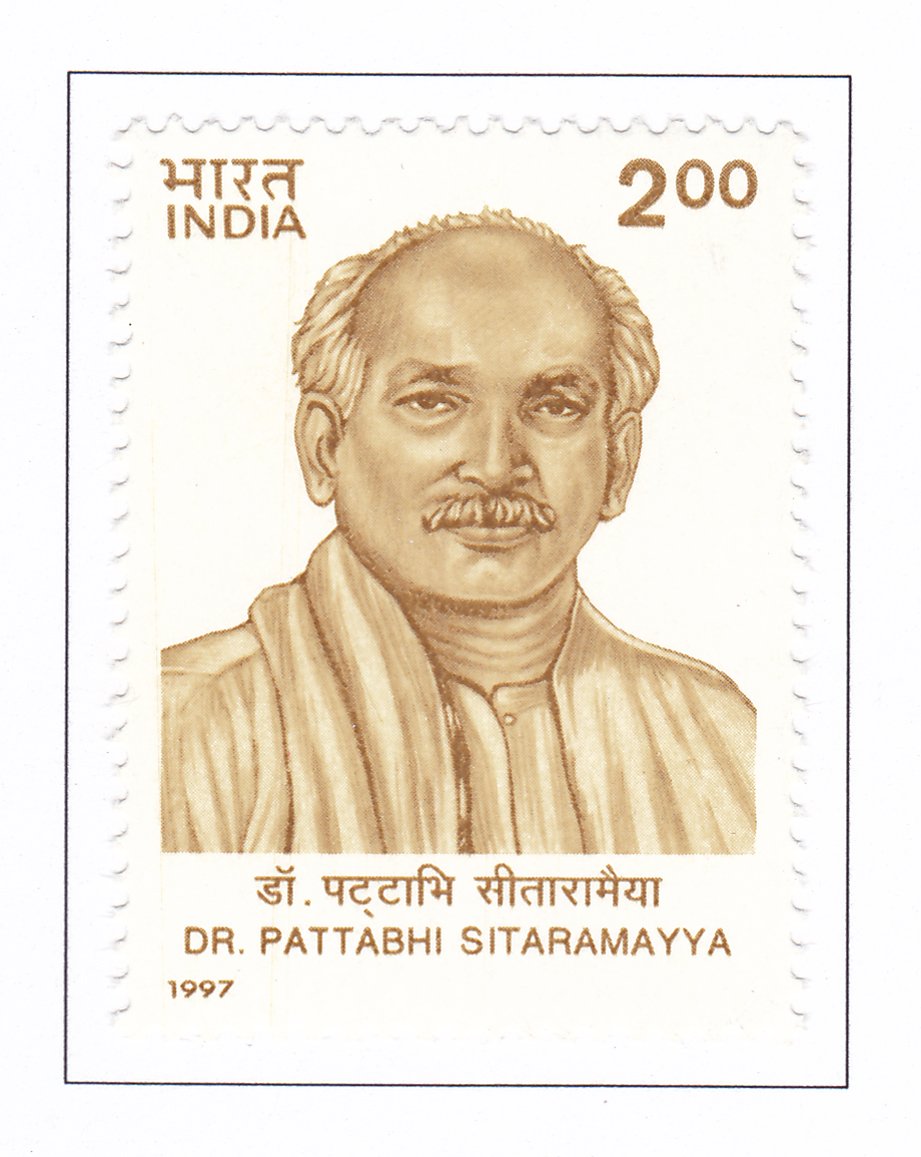Dr. Pattabhi Sitaramayya (1880-1959)

Technical Data
| Date of Issue | December 17, 1997 |
|---|---|
| Denomination | Rs. 2 |
| Quantity | 400,000 |
| Perforation | comb 13 x 13½ |
| Printer | Security Printing Press, Nashik |
| Watermark | No Watermark |
| Colors | Yellow brown |
| Catalog Codes |
Michel IN 1599 Stamp Number IN 1660 Yvert et Tellier IN 1365 Stanley Gibbons IN 1763 |
| Themes | Commemoration | Famous people | Men | Politicians |
Table of Contents
Commemorative Stamp: Dr. Bhogaraju Pattabhi Sitaramayya
Overview of Dr. Bhogaraju Pattabhi Sitaramayya:
- Birth: November 24, 1880, in Gundugolanu Village, West Godavari District, Andhra Pradesh.
- Early Life: Born into poverty, Dr. Pattabhi rose in life through sheer perseverance, completing his education with the help of scholarships.
- Education: Attended Madras Christian College, where he earned a BA degree, and later secured an M.B.C.M. degree, fulfilling his ambition to become a medical practitioner.
Contributions to Society and National Movement:
- Medical Practice: Initially practiced medicine in Machilipatnam, Andhra Pradesh, but later relinquished his lucrative practice to join the National Movement.
- Founding of Institutions:
- Established Andhra Jateeya Kalasala in 1910.
- Founded Andhra Bank on November 28, 1923, with the goal of supporting the farming community.
- Created several other institutions in line with national aspirations of self-reliance, including Krishna Cooperative Central Bank (1915), Andhra Insurance Company (1925), and Bharat Laxmi Bank Ltd. (1929).
Role in Journalism:
- Editor of Krishna Patrika: From 1908 to 1911, where he developed a unique style in both English and Telugu.
- Founder of the English Journal ‘Janmabhoomi’: Started in 1919 to propagate Gandhian ideology, bringing his journalistic talents into the national spotlight.
- Editor of ‘Independent’: Invited by Pandit Motilal Nehru to edit the journal published from Allahabad.
Involvement in the National Movement:
- Imprisonments: Suffered imprisonment for seven years during various national movements, including the Salt Satyagraha (1930), Civil Disobedience (1932), Individual Satyagraha, and the Quit India Movement (1942).
- Authorship: Authored several books, with the most notable being the “History of the Indian National Congress.”
Political and Administrative Roles:
- Constituent Assembly: Served as a member of various key committees, including the Rules Committee, Union Powers Committee, and Provincial Constitution Committee.
- Congress Leadership: Elected President of the Indian National Congress in 1948.
- Governorship: Served as the Governor of Madhya Pradesh from 1952 to 1957.
- Later Life: Settled in Hyderabad after retiring from the governorship and passed away on December 17, 1959.
Legacy:
- Remembered by Dr. Rajendra Prasad: India’s first President highlighted Dr. Pattabhi’s sharp intellect, strong memory, and significant contributions to the Indian National Congress and the nation’s freedom struggle. His efforts to organize people’s movements in Princely States and his interest in Gandhiji’s constructive programs were particularly noted.
Stamp Design and Release:
- Commemorative Stamp: Issued by the Department of Posts to honor Dr. B. Pattabhi Sitaramayya’s contributions to the nation.
- Significance: The stamp serves as a tribute to one of India’s foremost freedom fighters and a leader whose example continues to inspire the youth in the service of the nation.
